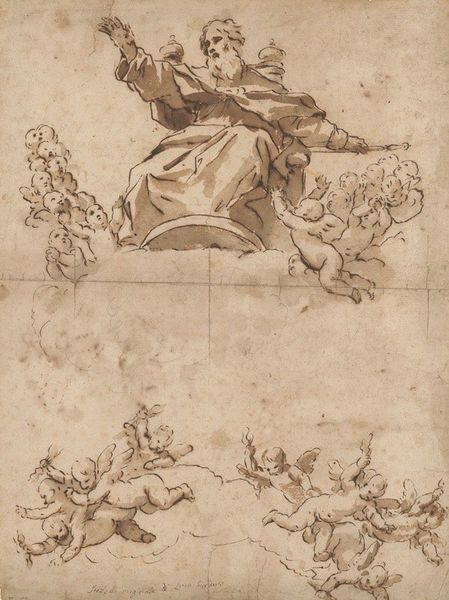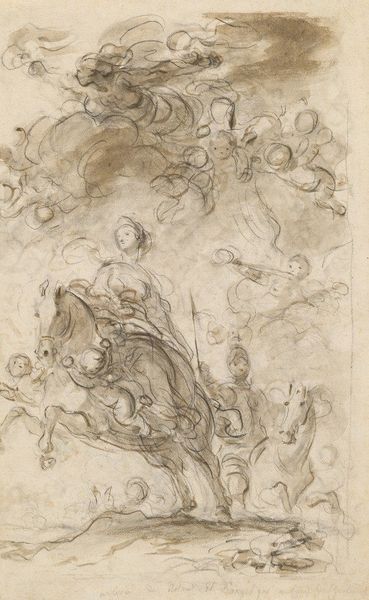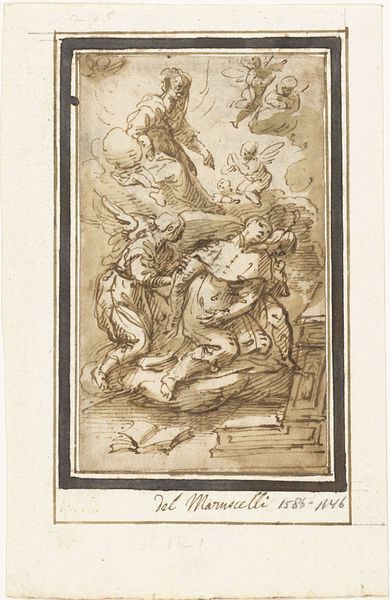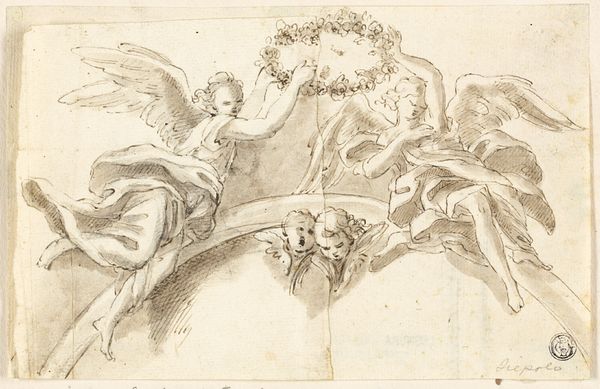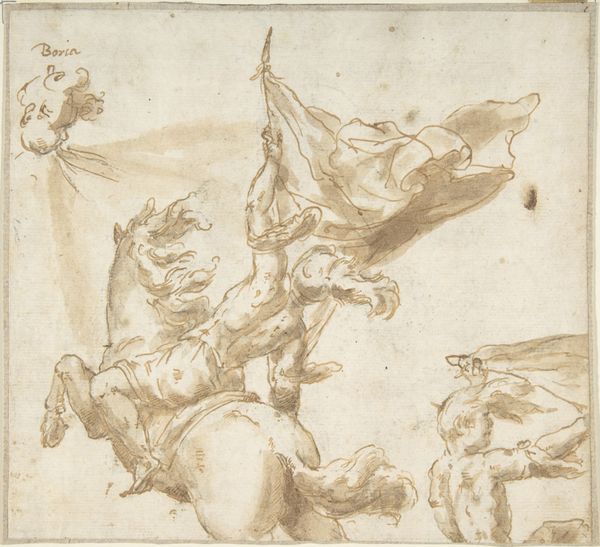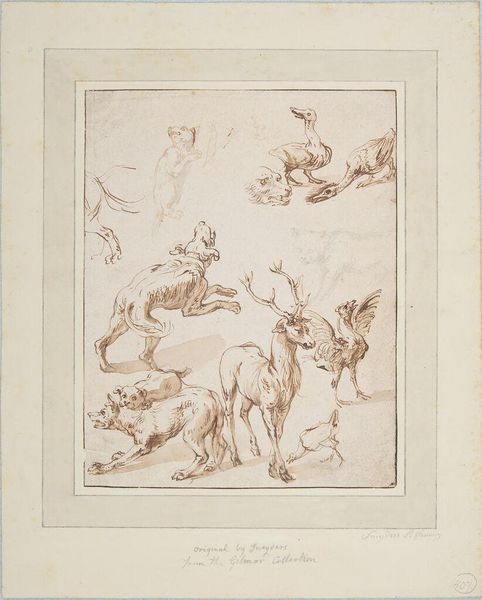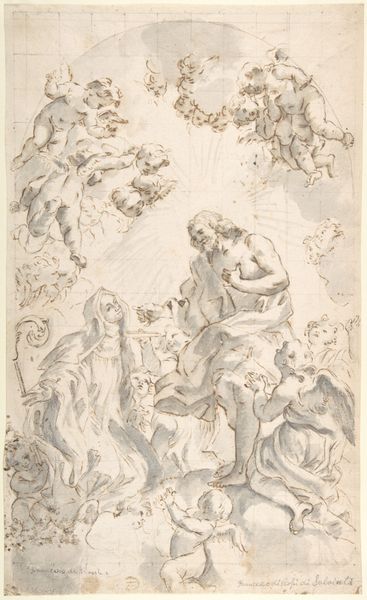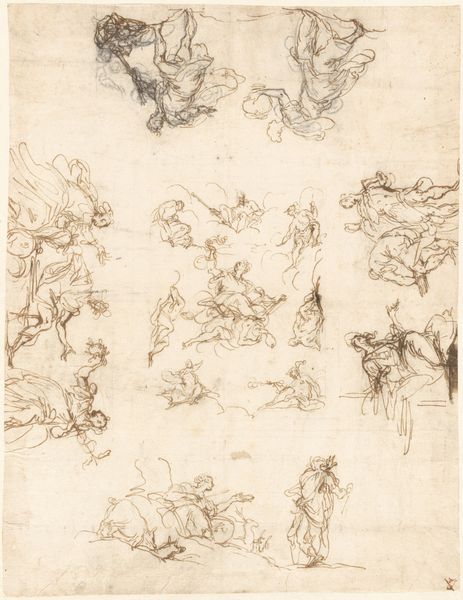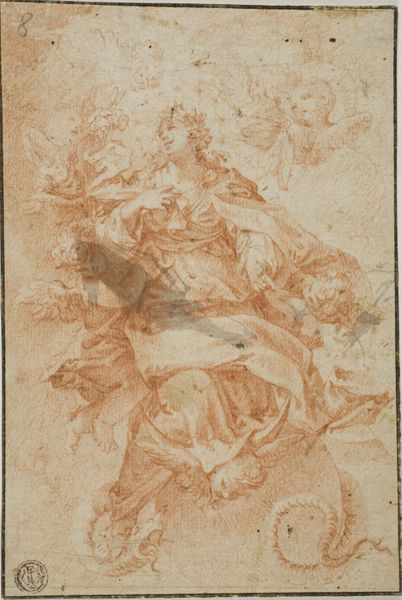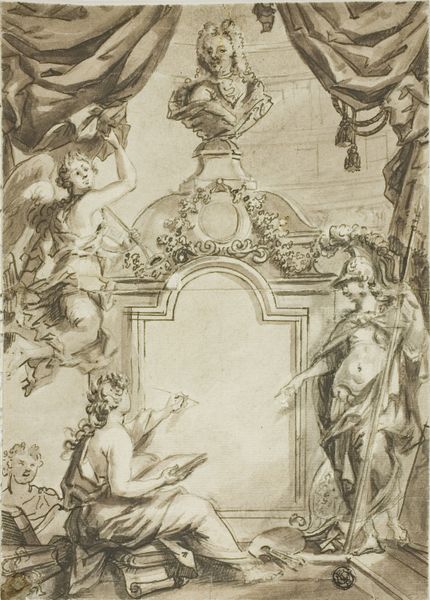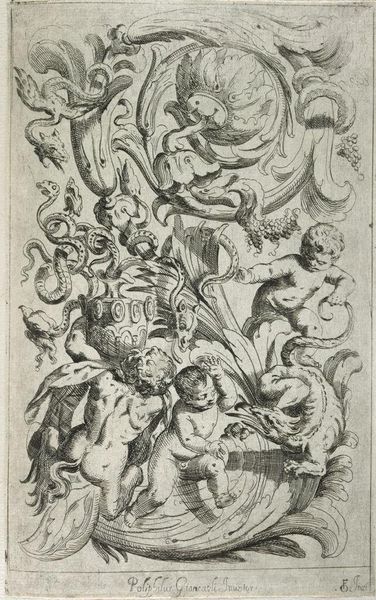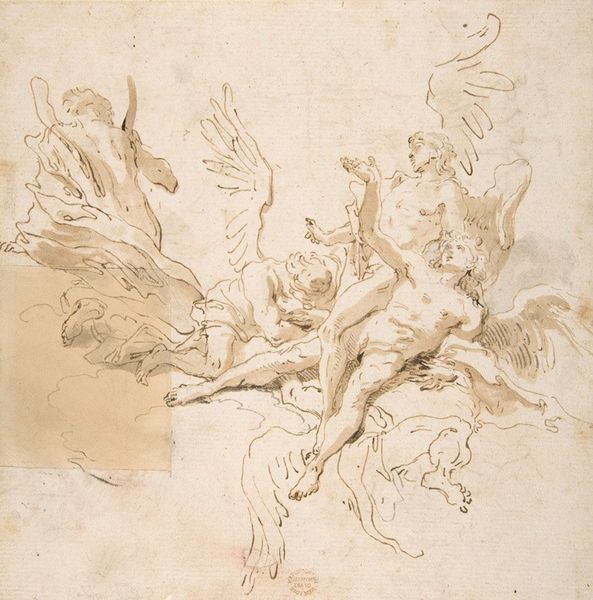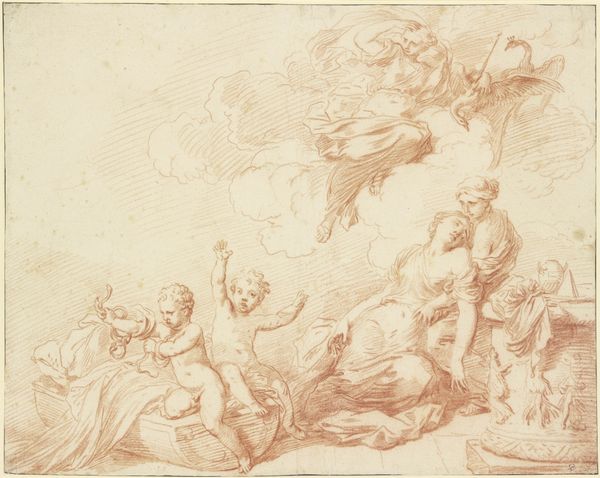
drawing, paper, pencil
#
drawing
#
allegory
#
narrative-art
#
mannerism
#
figuration
#
paper
#
pencil
#
italian-renaissance
Copyright: Public Domain: Artvee
Curator: Agnolo Bronzino's drawing, "The Fall of Phaethon," dating from about 1555 to 1559, vividly captures a moment of divine retribution. What are your immediate thoughts looking at this pencil drawing? Editor: Chaos! The eye struggles to find a stable point. It's a cascade of bodies, equine and human, all rendered with this incredibly sharp, almost academic precision that seems at odds with the subject matter. Curator: The figures certainly exude that Mannerist elongation and idealized form. But consider Phaeton himself. Plunging from the heavens, a victim of his own hubris in attempting to drive the chariot of the sun. The image reverberates with warnings about unchecked ambition. Editor: True, but the composition pushes the narrative towards overload. I mean, look at the anatomical detail in the horses! Bronzino's meticulous approach ironically undermines the drama. We see a skillful study of forms in dynamic disarray, rather than feeling the cataclysm. Curator: I disagree. That careful rendering heightens the tragedy. These are not just bodies, but representations of classical ideals, violently disrupted. The cluster of terrified river gods below anticipates the repercussions of Phaeton's actions – a visual metaphor for cosmic disorder. The pencil becomes almost like an instrument of psychological excavation. Editor: Perhaps, but the detachment remains. The tonal range is limited; the shadows meticulously hatched, never truly engulfing. I find it intellectually engaging but emotionally...muted. The symbolism doesn’t necessarily translate into raw feeling for me. Curator: Consider the myth's cultural function in 16th-century Italy. It served as a potent reminder of the importance of order, tradition, and respecting established hierarchies –values crucial to the ruling families who commissioned such works. The image speaks, not only to Phaeton's personal downfall, but to the wider implications of disrupting the social fabric. Editor: An intriguing point. Seeing it now less as an exercise in anatomical virtuosity, I can almost see that coldness almost amplifying a more calculated kind of dread. Still, technically the piece does sacrifice that sense of immediacy in pursuit of that tight formal articulation. Curator: So, maybe we meet in the middle –a meticulously rendered fall from grace that speaks volumes about the anxieties of its time. Editor: A persuasive final reading, that makes you consider just how powerful even in pencil is this Italian Renaissance exploration into narrative.
Comments
No comments
Be the first to comment and join the conversation on the ultimate creative platform.
